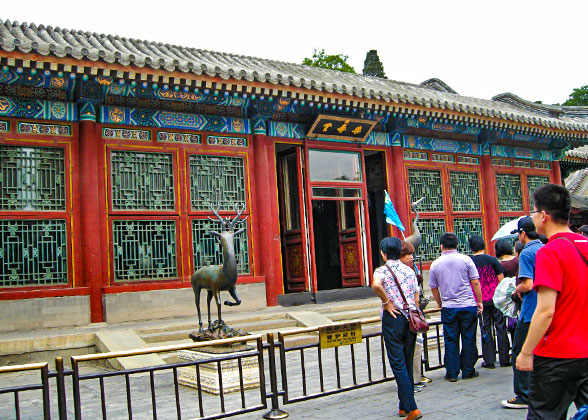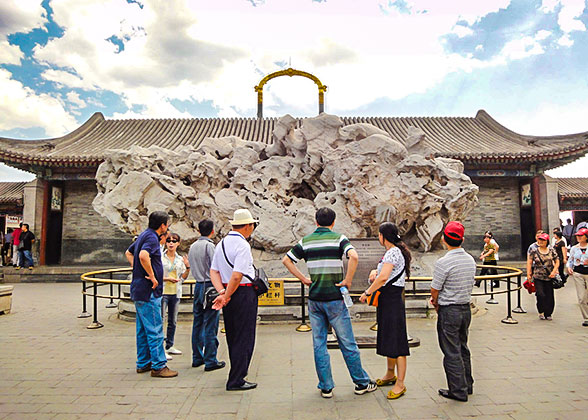Hall of Joyful Longevity (Leshoutang)
During the reign of Emperor Qianlong (1711-1799), the Hall of Joyful Longevity was first built as a gift for his mother's sixtieth birthday. There are some ten plaques in the compound and most of them express blessing and auspiciousness. It was originally a 2-storey building with the hall for Buddha worship upstairs and study below, in the same layout of design to the Hall of Joyful Longevity inside the Palace of Tranquil Longevity in the Summer Palace. It was burnt down by the Anglo-French Allied Forces in 1860 and rebuilt into a one-storey building in 1887 as the residence for Empress Dowager Cixi. Structurally, the Hall of Joyful Longevity is a typical Siheyuan (Chinese quadrangles) compound with a courtyard in the center. There are small yards on two sides of the main house with side houses in east and west wings. A decorated pathway is located between the main gate and the courtyard as the secondary entrance. It also has the Back Hall behind the main hall. The bronze deer, bronze crane and bronze vase placed in front of the main hall symbolize peace; and the magnolia, begonia and peony plants growing in the yard represent prosperity. In front of the Hall of Joyful Longevity is a stone wharf with decorated railings. It was where Cixi disembarked or embarked at Summer Palace by water. Two huge carved stone pillar were used to hang lamps.
|
|

There is a huge strange stone that served as an entrance screen facing the gate. This stone was once called an unlucky stone that will bring ruins on one's family due to the legend below. Mi Wanzhong was a rich official in the Ming Dynasty who had a mania for stones. He spent all his property in order to move the stone to his house but failed in the end when he had no money to do this any more. The stone was abandoned in a place called Liangxiang. Once on the way back from ancestral worship from the Qing Western Tombs, the Emperor Qianlong found it and showed a little interest. The Hall of Joyful Longevity had its wall and yard built and the huge stone (8-meters long, 2-meters wide and 4-meters high) was too big to pass through the main gate. It was an unlucky stone leading to the bankruptcy of the Mi Family and it was even less auspicious to break the newly-built gate to let it in. Thanks to a delicate interpretation by Liu Yong, an advanced scholar who served as the grand secretary of the imperial government, the emperor and the emperor dowager believed that it was a spirit stone in shape of the auspicious ganoderma fungi which can bring forth spiritual reinforcement to support the reign of Qing. Then, visitors have the chance to see this natural screen in the courtyard.
Inside the well-decorated main hall sets a carved sandalwood throne, a pair of peacock fans, and a folding screen. On both sides of the throne are two porcelain plates for holding fruits. Four big copper incense burners are served for burning sandalwoods and functioned to adjust the air with fragrance. On the ceiling of the hall hung a colorful pendant lamp, which was the first lamp used in China, imported from Germany in 1903. There are four gilded bronze incense furnaces in the four corners of the hall. The west room was used as a bedroom and the east for a dressing room. Emperor Qianlong lived here when he abdicated and Empress Dowager Cixi once lived here for a short while.
![]() Next: Longevity Hill
Next: Longevity Hill
![]() Related Link: Summer Palace Travel Tips
Related Link: Summer Palace Travel Tips

